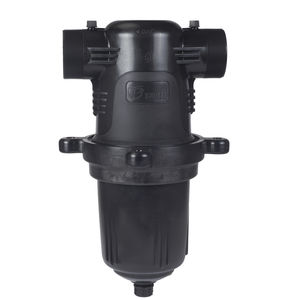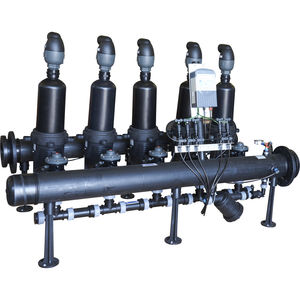
Irrigation disc filter Adir TDSsemi-automatic
Add to favorites
Compare this product
Characteristics
- Technology
- disc
- Other characteristic
- semi-automatic
Description
TAVLIT offers a unique and innovative semi-automatic disc filter that enables the user the advantages of disc filtration without the need of opening the filter and manually cleaning
the discs on one hand and without the expensive and sophisticated control systems of an automatic disc filters.
The cleaning process is simple and quick.
The user only has to turn the handle a ¼ of a turn for 10-20 seconds. The filters are available at 2 and 3” and flow rates up to 50m3/h (220 gpm).
Special Features:
• Flushing is performed simply by turning the operation handle a ¼ of a turn. Quick and easy.
• Water for flushing the discs is filtered with an internal screen.
• Small footprint.
• No external valves are required
Applications:
• Water filtration for Agriculture, Turf and industry.
• Intended as control filter in subsections for easy cleaning.
• Most suitable for low quality water sources where the user prefers to clean the discs element without dismantling the filter.
Standard - Pressure indicator enables quick and easy way to show the user that the filter is dirty and needs flushing.
• When pressure loss across the filter element reaches the preset value, usually 0.5 bar (7 psi), the red button pops up and the user can see from a distance that the filter needs flushing.
• There is no need to perform manual pressure tests.
• After flushing the button descends into the indicator body.
• The device is connected directly to the pressure testing ports located on the filter body
Catalogs
No catalogs are available for this product.
See all of tavlit‘s catalogs*Prices are pre-tax. They exclude delivery charges and customs duties and do not include additional charges for installation or activation options. Prices are indicative only and may vary by country, with changes to the cost of raw materials and exchange rates.






